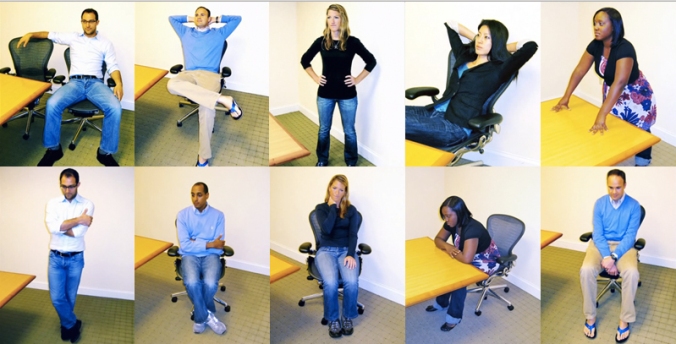We spoke about power pose the last time and looked at the basics of it. This brilliant video by Amy Cuddy, a social psychologist, talks about research related to the relationship between non verbal language and how it affects our mind. We all know that our body language reflects how we feel. The talk works around the corollary – does our body language affect our state of mind? It looks into the effect of our own body language on how we feel. Let’s look at a couple of premises Cuddy discusses.
Non verbals are so powerful that even 30 second mute clips of doctors were enough to rightly predict the doctor – patient relationship. When we are happy, we tend to open our arms, hold out head high to express triumphant. And this is true of even congenitally blind people who have never seen that pose. This led to Cuddy questioning if the reverse was true too.
Our minds change our bodies but do our bodies change our minds?
To test this hypothesis, Cuddy and her research co-ordinators had volunteers come into a room and try out high and low power poses for 2 minutes. Now, scientific evidence exists to show that high power pose people are not just different physically but also physiologically. Powerful people have high testosterone and low cortisol and low power people are high on cortisol and low on testosterone. So, after these people had posed for 2 minutes in the given pose, they were asked to gamble. And then their saliva samples were collected to test their hormone levels.
The tests showed the high power pose people felt a lot more confident and were more risk tolerant during gambling due to their high levels of testosterone. And it was just the opposite with the low power people. And so, we can conclude that:
our non verbals govern how we think and feel about ourselves (Click to tweet this)
Does it have a meaningful impact in real life?
After the conclusions in the lab, Amy started to wonder if the same could make a difference in real life situations that required people to feel confident. To test this, the volunteers were put through a 5 minute stressful interview in the lab which was also recorded. What made it more stressful was that the interviewers were primed not to give out any non verbals cues whatsoever. And this really spikes the cortisol levels. Irrespective of the answers, when the tapes were watched, people wanted to hire all the high posers and not low posers. That is because powerful posers come across more positively. So, Cuddy had evidence that proved that:
Our bodies changed our minds
…and our minds change our behaviour
…and our behaviour changes our outcomes.
Can you fake it till you make it?
If you did not feel confident but just faked it through body language, would you not feel like an impostor? This was the last of the concerns that the video addresses. Cuddy talks about her own life where after a life altering accident at 19, she struggled her way through college. Believing that she can do it ensured that she did it. So her advice is:
“Fake it till you become it” (Click to tweet this)
She ends her talk by suggesting that before any big event we should be power posing alone, in bathroom stalls or wherever possible to get our testosterone up and cortisol down. Tiny tweaks can lead to big changes.
So the next time you are up for an important presentation or interview, instead of hunching over your phone or hugging yourself, find a place to be alone. Raise your arms in a V or put your hands on your waist and raise your head high and feel the positive energy rise in you!
RELATED POSTS
A-Z of soft skills: B for Body Language
